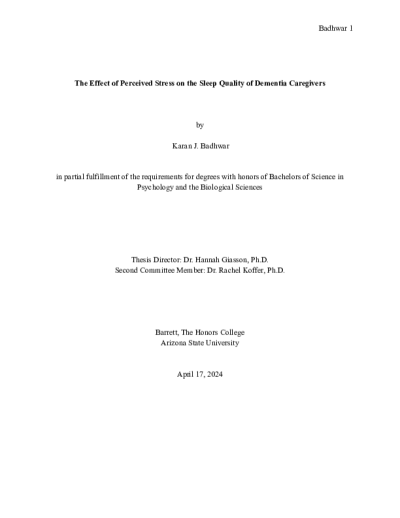Filtering by
- All Subjects: Depression
- Creators: Department of Psychology
- Member of: Theses and Dissertations

Significant health inequalities exist between different castes and ethnic communities in India, and identifying the roots of these inequalities is of interest to public health research and policy. Research on caste-based health inequalities in India has historically focused on general, government-defined categories, such as “Scheduled Castes,” “Scheduled Tribes,” and “Other Backward Classes.” This method obscures the diversity of experiences, indicators of well-being, and health outcomes between castes, tribes, and other communities in the “scheduled” category. This study analyzes data on 699,686 women from 4,260 castes, tribes and communities in the 2015-2016 Demographic and Health Survey of India to: (1) examine the diversity within and overlap between general, government-defined community categories in both wealth, infant mortality, and education, and (2) analyze how infant mortality is related to community category membership and socioeconomic status (measured using highest level of education and household wealth). While there are significant differences between general, government-defined community categories (e.g., scheduled caste, backward class) in both wealth and infant mortality, the vast majority of variation between communities occurs within these categories. Moreover, when other socioeconomic factors like wealth and education are taken into account, the difference between general, government-defined categories reduces or disappears. These findings suggest that focusing on measures of education and wealth at the household level, rather than general caste categories, may more accurately target those individuals and households most at risk for poor health outcomes. Further research is needed to explain the mechanisms by which discrimination affects health in these populations, and to identify sources of resilience, which may inform more effective policies.

This narrative literature review explores how perceived stress affects sleep quality in dementia caregivers by examining various factors. Ten studies from 2013 to 2022 across four continents were analyzed, focusing on caregiver stress levels, sleep quality, caregiver burden, and depression. Higher stress levels were linked to poorer sleep quality, alongside factors like emotional distress and disrupted sleep patterns. The findings highlight the importance of targeted interventions to reduce stress and improve sleep quality among dementia caregivers, suggesting the need for longitudinal and empirical studies with standardized measures for a better understanding.


Reasons to Stay Alive is a short story that follows the protagonist, Corinne Larson, and her experiences with depression and anxiety as well as self-harm and suicidal ideations. It is meant to act as an antithesis to media that romanticizes suicide, such as the television show 13 Reasons Why (2017), and instead glorify growth and healing. Specifically, it focuses on the importance of social support in the healing process. The story is separated into three different formats: narrative, letter, and free-verse poetry. It is prefaced by a poem titled ‘death by suicide’ that discusses the stigma around suicide and the reason why the phrase ‘commit suicide’ was changed to ‘death by suicide’. The story then starts with a letter written by Corinne to her future self during a time she was really struggling with depression and self-harm and suicidal ideations. It is a plea with her future self to tell her everything will be alright. The rest of the story is broken into four parts, each about a specific and important person in Corinne’s life. Each part starts off as a first person narrative from Corinne’s point of view and is a memorable experience she had with each person and ends with a short letter addressed directly to each person. The letters are a chance for Corinne to tell each person how important they are to her, how they made an impact in her life, and how they gave her a reason to stay alive. Between each part is a poem that deals with different themes relating to depression or anxiety. The story ends with a letter written by Corinne to her future self that goes back and addresses the first letter. It gives past Corinne some words of advice and tells her that her reasons to stay alive are the important people in life as well as herself and the person she will become.